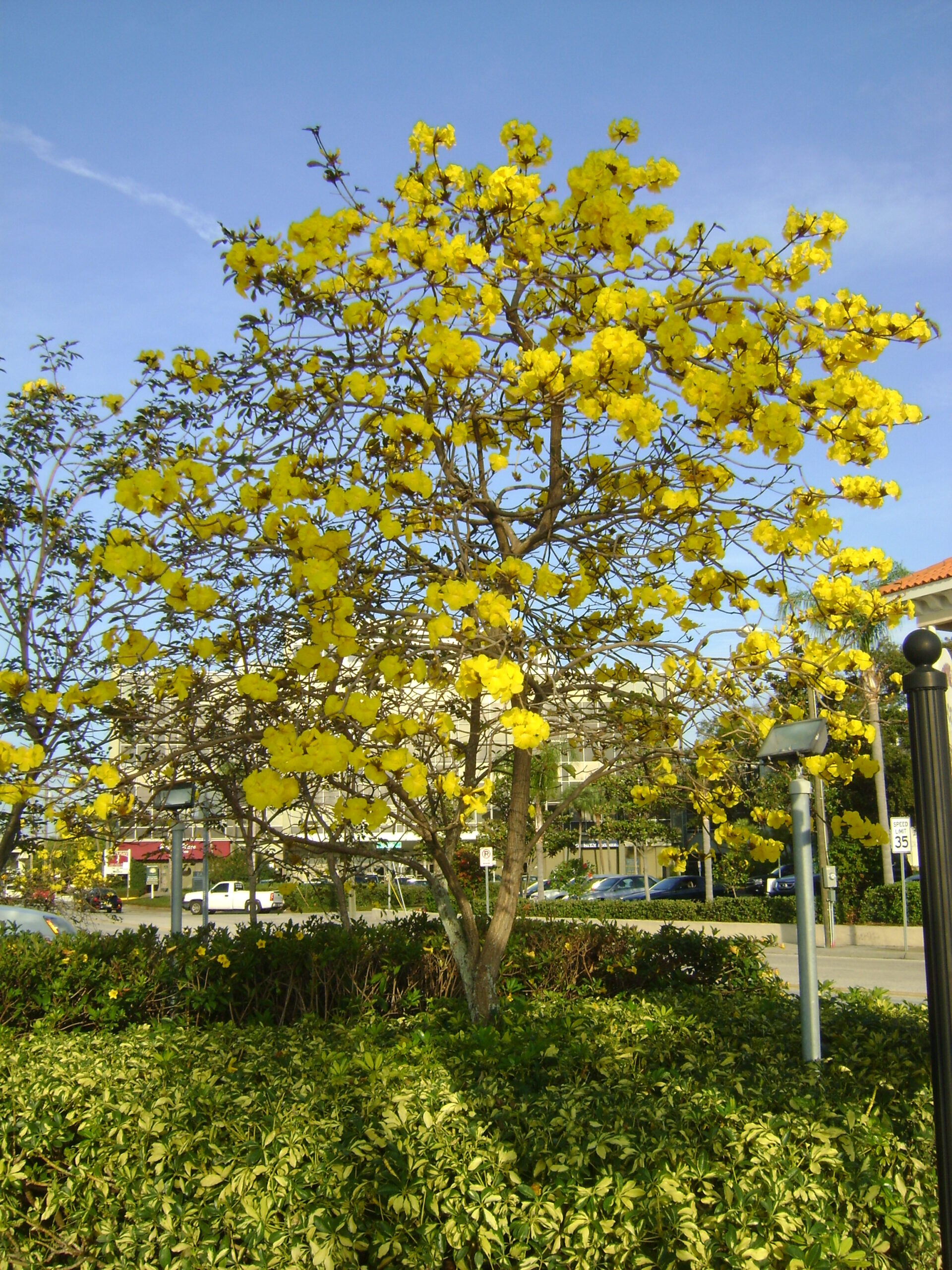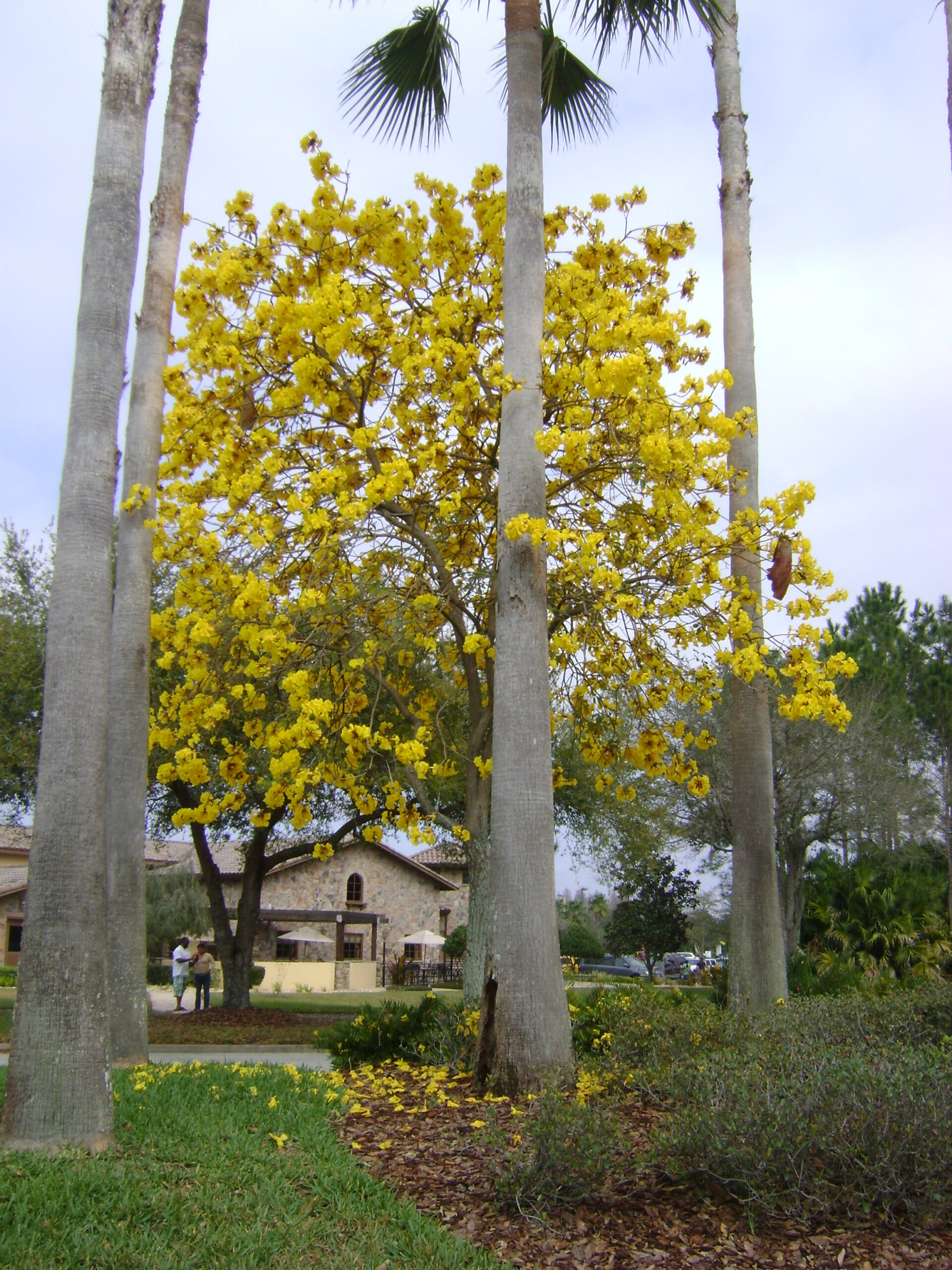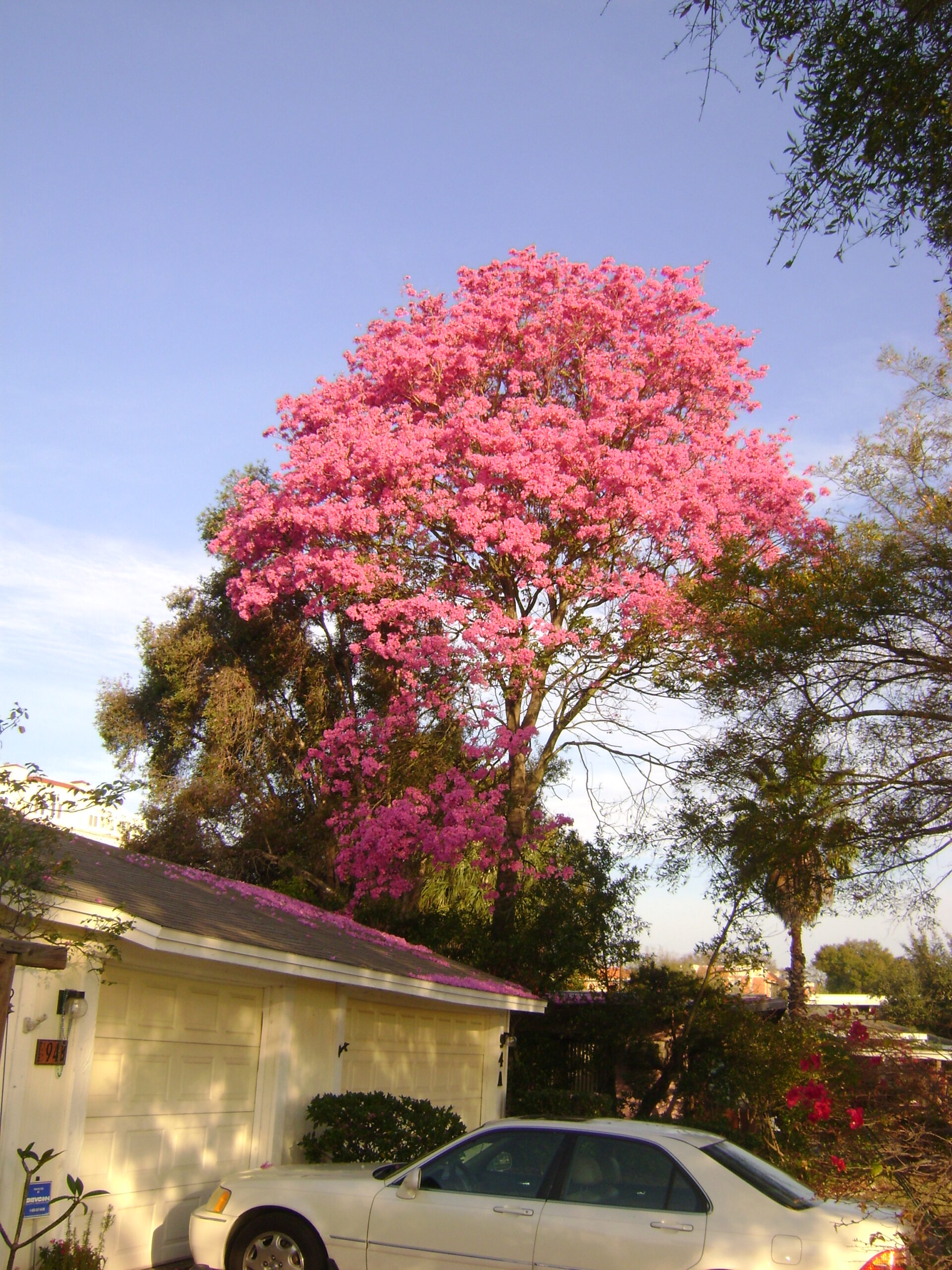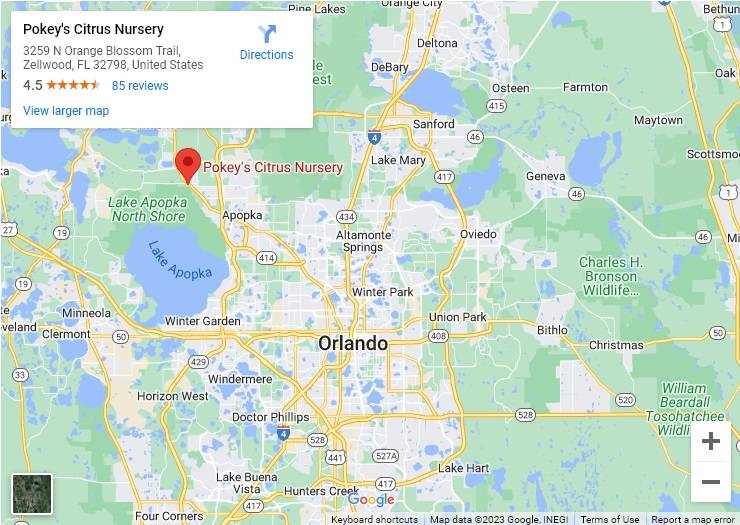Altough most Tabebuia are grown in more tropical South Florida, there are some species that have been cultivated and grown for the Orlando climate. The “cold” winters compared to Miami make it necessary to consult with a local tree nursery to purchase the right tree.
Tabebuia is one of the most beautiful flowering trees growing in and around Orlando. Also known as the trumpet tree, this striking tropical beauty is an asset in the Florida home landscape even when it is not in bloom.
Perfect for shading patios or lawns, the evergreen Tabebuia is a midsized tree that grows 15 to 25 feet tall with a dense, spreading, dome-shaped canopy 10 to 15 feet wide. The bark is dove gray, deeply furrowed and visually interesting. The branches are irregular and often bend in unusual, eye-catching ways. The foliage is pale green to silver and the leaves are slender ovals, two to four inches long.
As attractive as the Tabebuia is when in leaf, blossom time is truly amazing. The flowers of the Tabebuia are pink or yellow with deep yellow centers, trumpet-shaped, profuse and extremely showy. The Tabebuia blooms primarily in late winter and early spring, but can blossom out two or more times a year. The leaves often drop just before blooming, creating the illusion of a tree composed solely of flowers.
Tabebuia is a low-maintenance tree that will thrive in almost any fertile soil and grows in full sun, partial sun or partial shade. Mature trees need little watering and are moderately resistant to salty breezes. Although old twigs can become brittle, the small stature of the tree and the openwork structure of the canopy helps the Tabebuia withstand high winds. The seedpods aren’t attractive to critters, and the Tabebuia is seldom bothered by pests. Some pruning of low-growing branches may be necessary in young trees to establish a strong central trunk.
Welcome spring in splendor with a blooming Tabebuia in your lawn or parkway. Use them as colorful accents among evergreens or plant them in groupings for a spectacular seasonal show.




